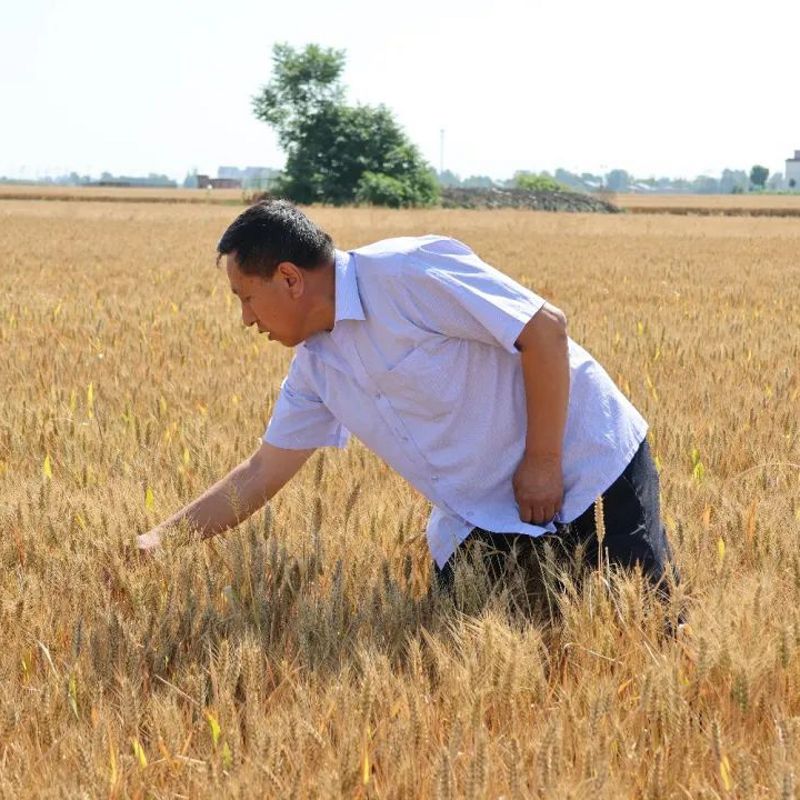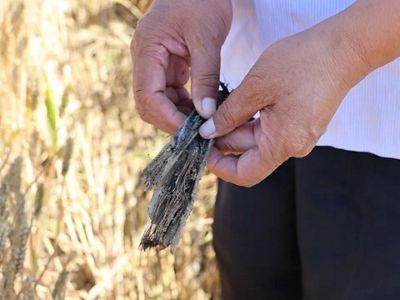
Using Less to Do More
Conservation tillage practices that leave the soil undisturbed show greater resilience, higher yields in China
In 2017, Si Zhanxin began implementing conservation tillage practices across 300 mu (about 50 acres) of wheat crops, and he's since seen yields increase by 10-20%. He's also seen a decrease in labor costs, water usage and fertilizer use.
"I didn't know anything about conservation tillage at first," said Mr. Si. "I coincidently heard about the 'new' technology of conservation tillage, and I became very interested in its advantages of saving time, labor and money."
After planting and fertilizing with minimum tillage, conservation tillage is a practice that covers 30% or more of the soil surface with crop residue/straw to reduce soil erosion and disturbance. Benefits of this practice include:
- Improved Frost Resistance
Under traditional farming methods, severe freezing events will cause wheat leaves to turn yellow, the roots to be drained, and the crops to die naturally. With conservation tillage, the seeds are completely planted in the soil, two-thirds of the crop root system is rooted in the soil, and one-third is close to the straw. This makes the growth process of the crop more stable and firm, and it is more resistant to frost.
- Improved Crop Lodging Resistance
Although the lodging resistance of wheat has a lot to do with the variety and quality of the seeds, a deep and well-developed root system can improve the crop's ability to withstand strong winds due to the implementation of conservation tillage. In addition, due to the soft texture of large-scale plowed soil, it is easy to be blown up by the wind; however, covering the soil surface with straw and adopting conservation tillage practices that decrease soil disturbance can effectively prevent the soil from being blown away by the wind.
- Improved Soil Moisture Retention Capacity
Dingzhou, located in the North China Plain, has little snowfall, many sunny days and cold weather every winter. Straw mulching (and returning it to the field) and reducing soil disturbance in conservation tillage can effectively reduce the evaporation of surface water and improve the water retention capacity of the soil. Through wide and narrow rows, the "edge row advantage" of wheat growth can be fully utilized to achieve the effect of "not rowing sideways is better than rowing sideways", and improve the efficiency of crops in using water and nutrients.

After a few years of practicing conservation tillage, Mr. Si saw that the organic matter in the soil increased: the soil became soft, the color gradually turned black, and there were more earthworms. Earthworms in the soil can further improve the soil and increase soil fertility.
Quote: Si Zhanxin
Even under the same weather conditions, wheat grown in different fertile soils can vary greatly. In order to fundamentally improve the quality and yield of crops, we must start by maintaining and improving soil health.
In addition to farming, Mr. Si actively participates in various conservation tillage field-open days organized by The Nature Conservancy (TNC), and he also takes time to conduct field training for farmers. In Dingzhou, nearly 1,000 farmers have listened to his lectures, including big growers, family farms and agricultural/machinery cooperatives.
Some people have accepted conservation tillage, but most still hold a wait-and-see attitude. In the opinion of Mr. Si, the biggest constraint factor is the lack of financial support. He believes that conservation tillage needs to be promoted on a large scale, and the government needs long-term support, policy guidance and preference, and more scientific guidance, experimental demonstration and publicity.